#is urban planning.
Text
Modern Au Halsin wants one thing, and it's disgusting
Nature inclusive walkable cities with strong bike riding cultures
#bg3#bg 3#baldurs gate 3#halsin#halsin silverbough#bg3 funny#man probably has like.#6 degrees.#id bet at least 1.#is urban planning.#baldurs gate#halsin bg3#halsin bg 3#this was supposed to be queued.#oops.
442 notes
·
View notes
Text
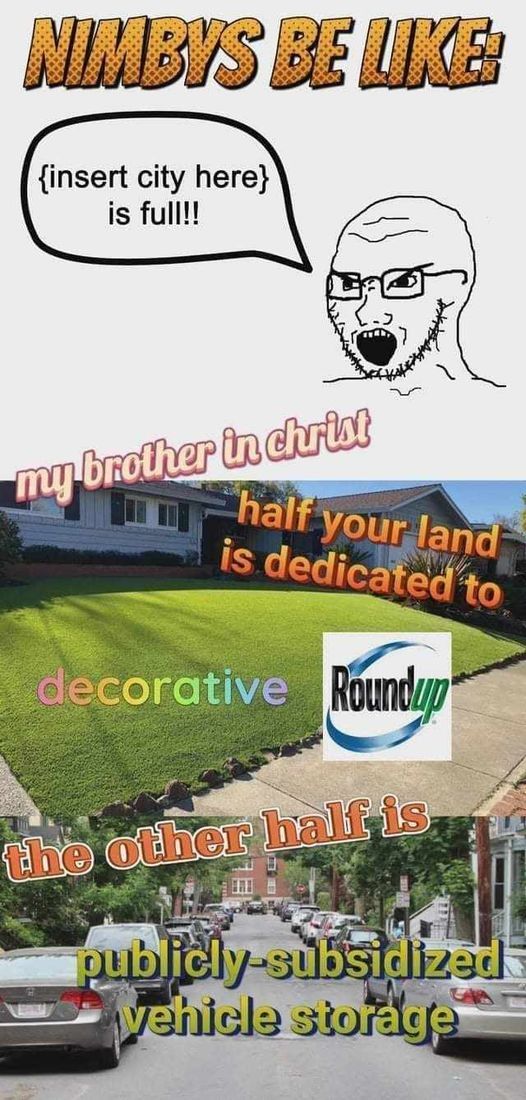
9K notes
·
View notes
Text
"With “green corridors” that mimic the natural forest, the Colombian city is driving down temperatures — and could become five degrees cooler over the next few decades.
In the face of a rapidly heating planet, the City of Eternal Spring — nicknamed so thanks to its year-round temperate climate — has found a way to keep its cool.
Previously, Medellín had undergone years of rapid urban expansion, which led to a severe urban heat island effect — raising temperatures in the city to significantly higher than in the surrounding suburban and rural areas. Roads and other concrete infrastructure absorb and maintain the sun’s heat for much longer than green infrastructure.
“Medellín grew at the expense of green spaces and vegetation,” says Pilar Vargas, a forest engineer working for City Hall. “We built and built and built. There wasn’t a lot of thought about the impact on the climate. It became obvious that had to change.”
Efforts began in 2016 under Medellín’s then mayor, Federico Gutiérrez (who, after completing one term in 2019, was re-elected at the end of 2023). The city launched a new approach to its urban development — one that focused on people and plants.
The $16.3 million initiative led to the creation of 30 Green Corridors along the city’s roads and waterways, improving or producing more than 70 hectares of green space, which includes 20 kilometers of shaded routes with cycle lanes and pedestrian paths.
These plant and tree-filled spaces — which connect all sorts of green areas such as the curb strips, squares, parks, vertical gardens, sidewalks, and even some of the seven hills that surround the city — produce fresh, cooling air in the face of urban heat. The corridors are also designed to mimic a natural forest with levels of low, medium and high plants, including native and tropical plants, bamboo grasses and palm trees.
Heat-trapping infrastructure like metro stations and bridges has also been greened as part of the project and government buildings have been adorned with green roofs and vertical gardens to beat the heat. The first of those was installed at Medellín’s City Hall, where nearly 100,000 plants and 12 species span the 1,810 square meter surface.
“It’s like urban acupuncture,” says Paula Zapata, advisor for Medellín at C40 Cities, a global network of about 100 of the world’s leading mayors. “The city is making these small interventions that together act to make a big impact.”
At the launch of the project, 120,000 individual plants and 12,500 trees were added to roads and parks across the city. By 2021, the figure had reached 2.5 million plants and 880,000 trees. Each has been carefully chosen to maximize their impact.
“The technical team thought a lot about the species used. They selected endemic ones that have a functional use,” explains Zapata.
The 72 species of plants and trees selected provide food for wildlife, help biodiversity to spread and fight air pollution. A study, for example, identified Mangifera indica as the best among six plant species found in Medellín at absorbing PM2.5 pollution — particulate matter that can cause asthma, bronchitis and heart disease — and surviving in polluted areas due to its “biochemical and biological mechanisms.”
And the urban planting continues to this day.
The groundwork is carried out by 150 citizen-gardeners like Pineda, who come from disadvantaged and minority backgrounds, with the support of 15 specialized forest engineers. Pineda is now the leader of a team of seven other gardeners who attend to corridors all across the city, shifting depending on the current priorities...
“I’m completely in favor of the corridors,” says [Victoria Perez, another citizen-gardener], who grew up in a poor suburb in the city of 2.5 million people. “It really improves the quality of life here.”
Wilmar Jesus, a 48-year-old Afro-Colombian farmer on his first day of the job, is pleased about the project’s possibilities for his own future. “I want to learn more and become better,” he says. “This gives me the opportunity to advance myself.”
The project’s wider impacts are like a breath of fresh air. Medellín’s temperatures fell by 2°C in the first three years of the program, and officials expect a further decrease of 4 to 5C over the next few decades, even taking into account climate change. In turn, City Hall says this will minimize the need for energy-intensive air conditioning...
In addition, the project has had a significant impact on air pollution. Between 2016 and 2019, the level of PM2.5 fell significantly, and in turn the city’s morbidity rate from acute respiratory infections decreased from 159.8 to 95.3 per 1,000 people [Note: That means the city's rate of people getting sick with lung/throat/respiratory infections.]
There’s also been a 34.6 percent rise in cycling in the city, likely due to the new bike paths built for the project, and biodiversity studies show that wildlife is coming back — one sample of five Green Corridors identified 30 different species of butterfly.
Other cities are already taking note. Bogotá and Barranquilla have adopted similar plans, among other Colombian cities, and last year São Paulo, Brazil, the largest city in South America, began expanding its corridors after launching them in 2022.
“For sure, Green Corridors could work in many other places,” says Zapata."
-via Reasons to Be Cheerful, March 4, 2024
#colombia#brazil#urban#urban landscape#urban planning#cities#civil engineering#green architecture#green spaces#urban heat#urban heat island effect#weather#meteorology#global warming#climate change#climate hope#climate optimism#climate emergency#climate action#environment#environmental news#city architecture#bicycling#native plants#biodiversity#good news#hope#solarpunk#ecopunk#hopepunk
15K notes
·
View notes
Text

If they're going to make people ride bikes and scooters in traffic, then it should at LEAST be legal to do the Snow Crash thing where you use a hook-shot-style harpoon to catch free rides from cars.
Urban Planning Opinion Progression [Explained]
Transcript Under the Cut
Typical urban planning opinion progression
[Each panel is connected to a point on a timeline]
Cueball: I wish there wasn't so much traffic to get into the city. They should put in more lanes.
Megan: And more parking.
Megan: Parking is so bad here.
Knit Cap: I have to go to Amsterdam for work next week. I hear they all ride bikes there.
Ponytail: Bikes are fine but people shouldn't ride them in the street! I worry I'm going to hit someone!
Cueball: It would be nice if we had better transit options!
Cueball: I tried a scooter. It was fun but I wish there were more bike paths.
Megan: It's funny how widening roads to speed up traffic makes them more dangerous to walk near, making driving more necessary and creating more traffic.
Megan: Really makes you think.
Knit Cap: Visiting the Netherlands was cool!
Knit Cap: Amsterdam is really neat.
Cueball: We've ceded so much of our land to storing and moving cars, with the rest of us tiptoeing around the edges and making drivers mad for trespassing on "their" space.
Cueball: Even though we're the ones in danger from them!
Megan: Those giant trucks with front blind spots that keep hitting kids should be illegal.
Knit Cap: We should be more like the Netherlands.
Knit Cap: They design their street to prioritize...
Cueball: The problem is car culture. It's systemic.
Cueball: I don't know if we can fix it.
Megan: People approach road planning decisions from the point of view of drivers because that's how we're used to interacting with the city, so we make choices that make it more car-friendly.
Megan: It's a vicious cycle.
Knit Cap: Netherlands! Netherlands! Netherlands! Netherlands!
Cueball: Anything that makes a city a worse place to drive in makes it a better place to live, short of scattering random tire spikes on the road.
Megan: Honestly, I think the city council should consider the tire spikes thing.
#xkcd#xkcd 2832#urban planning opinion progression#webcomics#urban planning#transport#car transport#walkable cities#bikeable cities#cars
5K notes
·
View notes
Text
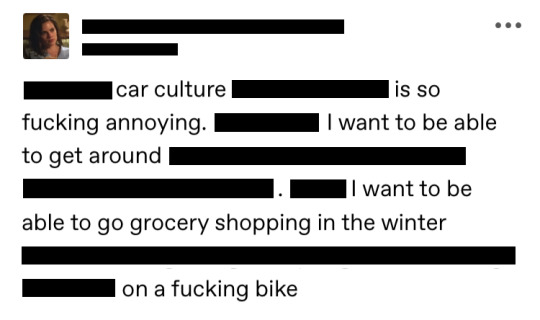
car culture is so fucking annoying.
#fixingbadposts#fixing-bad-posts#blackout poetry#walkable cities#walkability#city planning#urban planning#urban design#miscellaneous
3K notes
·
View notes
Text







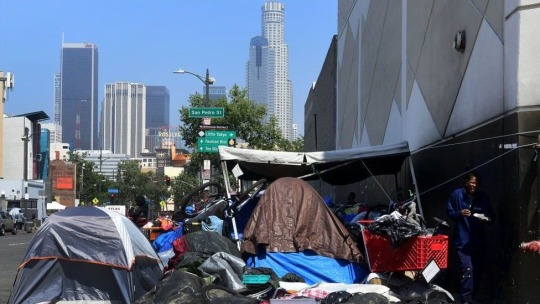


#4th of july#america#usa#transit#roads#car culture#political#multipost#urban planning#car dependency#not just bikes#moodboard#usa moodboard#american dream#urbanism#urban design#bike lanes
21K notes
·
View notes
Note
req: more of your future emmet! in france!
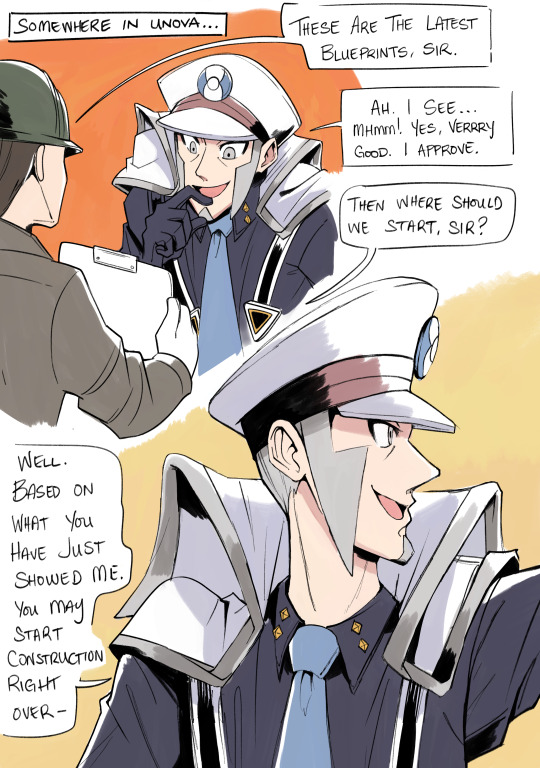
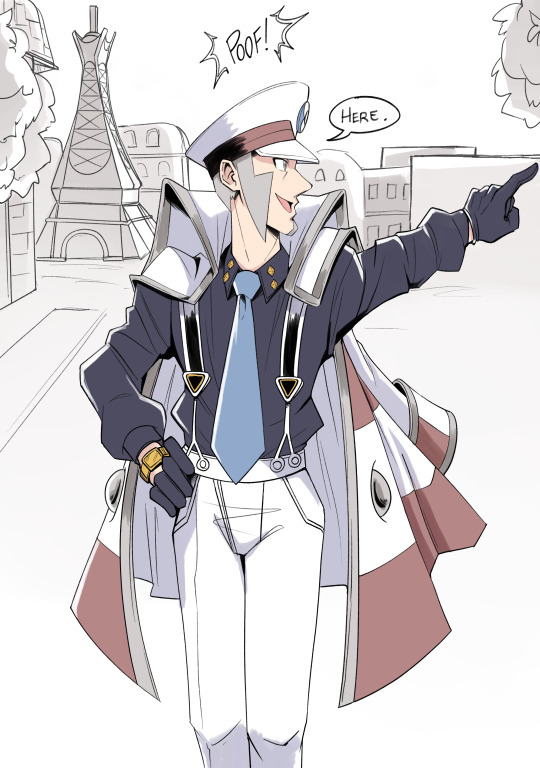


oh... how unfortunate...
bonus:

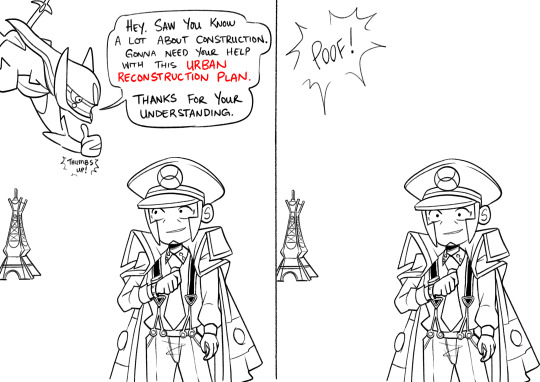
don't worry, Emmet! I'm sure you'll have a great time :D
#submas#subway boss emmet#subway boss kudari#pokemon legends za#arceus#zygarde#future!emmet#my art#doodlewizardry#asks#haha what a lucky find for arceus right#a guy that owns a railway company and builds them all the time#perfect for URBAN RECONSTRUCTION PLAN in kalos#i just wanted to do a funny for this one#but i wanna make an updated design for him too :D#also yes i want to imagine that little zygarde cores are just floating around
1K notes
·
View notes
Text
Lies, damned lies, and Uber

I'm on tour with my new, nationally bestselling novel The Bezzle! Catch me TONIGHT in PHOENIX (Changing Hands, Feb 29) then Tucson (Mar 10-11), San Francisco (Mar 13), and more!

Uber lies about everything, especially money. Oh, and labour. Especially labour. And geometry. Especially geometry! But especially especially money. They constantly lie about money.
Uber are virtuosos of mendacity, but in Toronto, the company has attained a heretofore unseen hat-trick: they told a single lie that is dramatically, materially untruthful about money, labour and geometry! It's an achievement for the ages.
Here's how they did it.
For several decades, Toronto has been clobbered by the misrule of a series of far-right, clownish mayors. This was the result of former Ontario Premier Mike Harris's great gerrymander of 1998, when the city of Toronto was amalgamated with its car-dependent suburbs. This set the tone for the next quarter-century, as these outlying regions – utterly dependent on Toronto for core economic activity and massive subsidies to pay the unsustainable utility and infrastructure bills for sprawling neighborhoods of single-family homes – proceeded to gut the city they relied on.
These "conservative" mayors – the philanderer, the crackhead, the sexual predator – turned the city into a corporate playground, swapping public housing and rent controls for out-of-control real-estate speculation and trading out some of the world's best transit for total car-dependency. As part of that decay, the city rolled out the red carpet for Uber, allowing the company to put as many unlicensed taxis as they wanted on the city's streets.
Now, it's hard to overstate the dire traffic situation in Toronto. Years of neglect and underinvestment in both the roads and the transit system have left both in a state of near collapse and it's not uncommon for multiple, consecutive main arteries to shut down without notice for weeks, months, or, in a few cases, years. The proliferation of Ubers on the road – driven by desperate people trying to survive the city's cost-of-living catastrophe – has only exacerbated this problem.
Uber, of course, would dispute this. The company insists – despite all common sense and peer-reviewed research – that adding more cars to the streets alleviates traffic. This is easily disproved: there just isn't any way to swap buses, streetcars, and subways for cars. The road space needed for all those single-occupancy cars pushes everything further apart, which means we need more cars, which means more roads, which means more distance between things, and so on.
It is an undeniable fact that geometry hates cars. But geometry loathes Uber. Because Ubers have all the problems of single-occupancy vehicles, and then they have the separate problem that they just end up circling idly around the city's streets, waiting for a rider. The more Ubers there are on the road, the longer each car ends up waiting for a passenger:
https://www.sfgate.com/technology/article/Uber-Lyft-San-Francisco-pros-cons-ride-hailing-13841277.php
Anything that can't go on forever eventually stops. After years of bumbling-to-sinister municipal rule, Toronto finally reclaimed its political power and voted in a new mayor, Olivia Chow, a progressive of long tenure and great standing (I used to ring doorbells for her when she was campaigning for her city council seat). Mayor Chow announced that she was going to reclaim the city's prerogative to limit the number of Ubers on the road, ending the period of Uber's "self-regulation."
Uber, naturally, lost its shit. The company claims to be more than a (geometrically impossible) provider of convenient transportation for Torontonians, but also a provider of good jobs for working people. And to prove it, the company has promised to pay its drivers "120% of minimum wage." As I write for Ricochet, that's a whopper, even by Uber's standards:
https://ricochet.media/en/4039/uber-is-lying-again-the-company-has-no-intention-of-paying-drivers-a-living-wage
Here's the thing: Uber is only proposing to pay 120% of the minimum wage while drivers have a passenger in the vehicle. And with the number of vehicles Uber wants on the road, most drivers will be earning nothing most of the time. Factor in that unpaid time, as well as expenses for vehicles, and the average Toronto Uber driver stands to make $2.50 per hour (Canadian):
https://ridefair.ca/wp-content/uploads/2024/02/Legislated-Poverty.pdf
Now, Uber's told a lot of lies over the years. Right from the start, the company implicitly lied about what it cost to provide an Uber. For its first 12 years, Uber lost $0.41 on every dollar it brought in, lighting tens of billions in investment capital provided by the Saudi royals on fire in an effort to bankrupt rival transportation firms and disinvestment in municipal transit.
Uber then lied to retail investors about the business-case for buying its stock so that the House of Saud and other early investors could unload their stock. Uber claimed that they were on the verge of producing a self-driving car that would allow them to get rid of drivers, zero out their wage bill, and finally turn a profit. The company spent $2.5b on this, making it the most expensive Big Store in the history of cons:
https://www.theinformation.com/articles/infighting-busywork-missed-warnings-how-uber-wasted-2-5-billion-on-self-driving-cars
After years, Uber produced a "self-driving car" that could travel one half of one American mile before experiencing a potentially lethal collision. Uber quietly paid another company $400m to take this disaster off its hands:
https://www.economist.com/business/2020/12/10/why-is-uber-selling-its-autonomous-vehicle-division
The self-driving car lie was tied up in another lie – that somehow, automation could triumph over geometry. Robocabs, we were told, would travel in formations so tight that they would finally end the Red Queen's Race of more cars – more roads – more distance – more cars. That lie wormed its way into the company's IPO prospectus, which promised retail investors that profitability lay in replacing every journey – by car, cab, bike, bus, tram or train – with an Uber ride:
https://www.reuters.com/article/idUSKCN1RN2SK/
The company has been bleeding out money ever since – though you wouldn't know it by looking at its investor disclosures. Every quarter, Uber trumpets that it has finally become profitable, and every quarter, Hubert Horan dissects its balance sheets to find the accounting trick the company thought of this time. There was one quarter where Uber declared profitability by marking up the value of stock it held in Uber-like companies in other countries.
How did it get this stock? Well, Uber tried to run a business in those countries and it was such a total disaster that they had to flee the country, selling their business to a failing domestic competitor in exchange for stock in its collapsing business. Naturally, there's no market for this stock, which, in Uber-land, means you can assign any value you want to it. So that one quarter, Uber just asserted that the stock had shot up in value and voila, profit!
https://www.nakedcapitalism.com/2022/02/hubert-horan-can-uber-ever-deliver-part-twenty-nine-despite-massive-price-increases-uber-losses-top-31-billion.html
But all of those lies are as nothing to the whopper that Uber is trying to sell to Torontonians by blanketing the city in ads: the lie that by paying drivers $2.50/hour to fill the streets with more single-occupancy cars, they will turn a profit, reduce the city's traffic, and provide good jobs. Uber says it can vanquish geometry, economics and working poverty with the awesome power of narrative.
In other words, it's taking Toronto for a bunch of suckers.

If you'd like an essay-formatted version of this post to read or share, here's a link to it on pluralistic.net, my surveillance-free, ad-free, tracker-free blog:
https://pluralistic.net/2024/02/29/geometry-hates-uber/#toronto-the-gullible

Image:
Rob Sinclair (modified)
https://commons.wikimedia.org/wiki/File:Night_skyline_of_Toronto_May_2009.jpg
CC BY 2.0
https://creativecommons.org/licenses/by-sa/2.0/deed.en
#pluralistic#uber#hubert horan#fraud#toronto#geometry hates cars#urbanism#ontpoli#olivia chow#self-regulation#transport#urban planning#taxis#transit#urban theory#labor#algorithmic wage discrimination#veena dubal
901 notes
·
View notes
Text
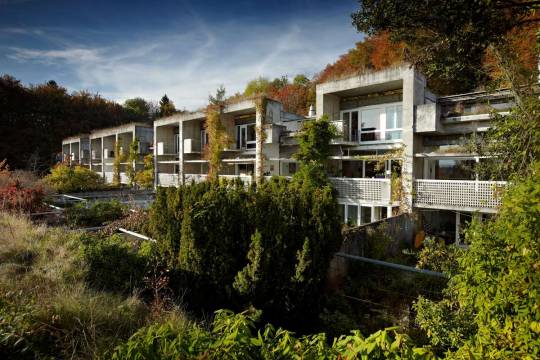

Siedlung Halen, Atelier 5, 1961
“More than 50 years on, it’s one of the most successful housing estates in existence“
PARKOUR HALENSIEDLUNG (2007), SIEDLUNG HALEN (2010)
These videos offer two perspectives on the iconic Halen development - one looks at history and design detail, while in the other its massing, human scale, and playfulness are demonstrated through parkour.
The 79-home Swiss project was designed by 5 young architects on a forested site overlooking a river, 15 minutes cycle ride from Bern. The land had been intended for their own houses, until costs necessitated a higher density. Communal facilities such as the swimming pool, playground and community hall have shared ownership, and the internal streets are pedestrianised. For additional reading, this feature in Monocle (quoted above) includes short profiles of some of the residents. They reflect the fact that the buildings, arranged on a slope with high walls between gardens, seem to have found a sweet spot between community and privacy. As one resident says: “You can sunbathe on the top floor balcony as God intended without anyone seeing.”
Perhaps part of Halen's success lies in how well it resolves two areas of tension in our relationship to spaces. Firstly the public/private balance, something like what Le Corbusier referred to as "silence, solitude, but also daily contact with mortals.” And secondly, Prospect Refuge theory, in which we crave immersion within nature, but also shelter from it - a view of the surrounding landscape, but also a feeling of enclosure and protection.
440 notes
·
View notes
Text

2K notes
·
View notes
Text



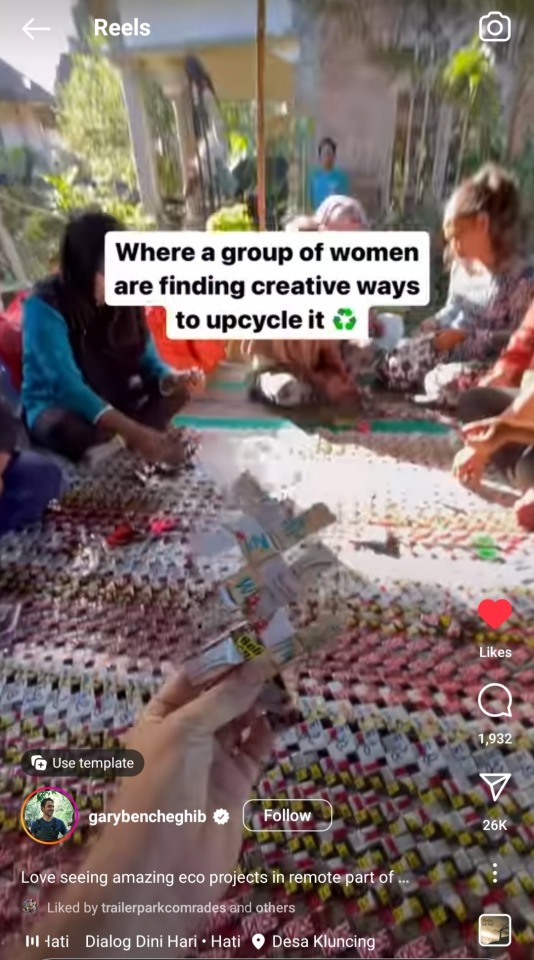





602 notes
·
View notes
Text
The Urbanist Nightmare That Is Our Current Reality
Watch and scroll as Youtube urbanist Not Just Bikes explains the concept of a STROAD; a literal blight on the US urban/suburban landscape that is also probably where you live…
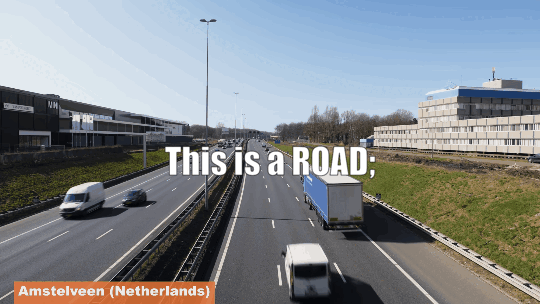
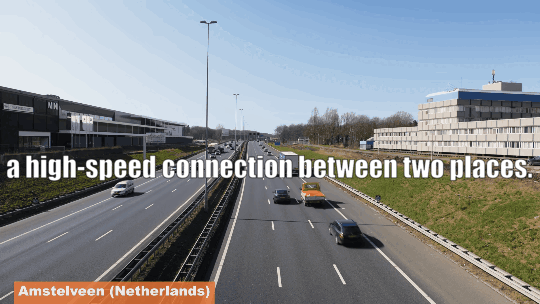


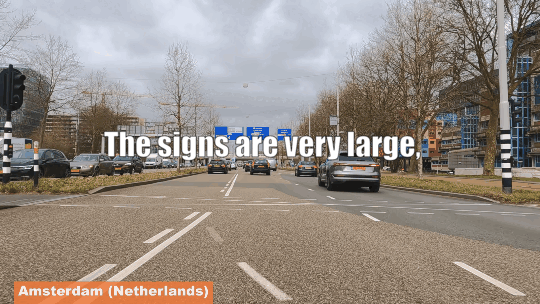
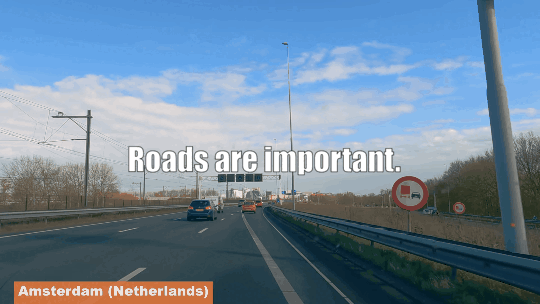





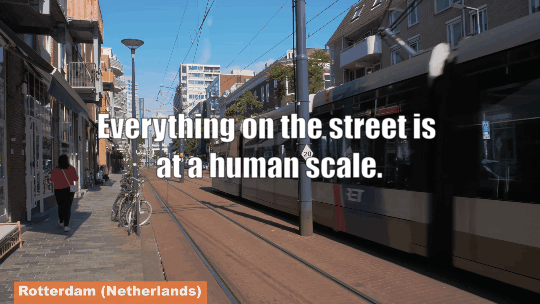






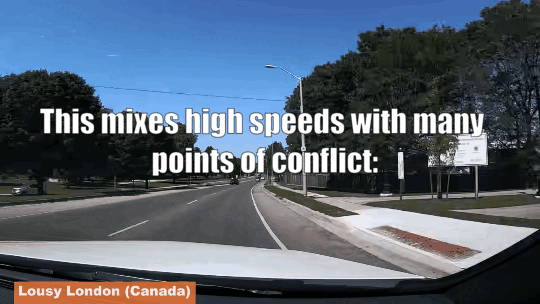


Watch the full glorious video HERE
#politics#the left#video#youtube#gifset#long post#not just bikes#orange pill#left urbanism#urbanism#progressive#progressive movement#urban sprawl#urban planning#suburbia
1K notes
·
View notes
Text
"Amsterdam’s roofs have just been converted into a giant sponge that will make the city more climate resilient.
The Dutch have always been famous for their ability to control water, born out of the necessity of their homeland, much of which is below sea level.
Now, their expert water management skills are transforming the city skyline in the capital city of Amsterdam from one of terracotta tile, concrete, and shingles into green grass and brown earth.
It’s part of a new climate-resiliency trend in architecture and civic planning known as the ‘sponge city concept,’ in which a garden of water-loving plants, mosses, and soil absorbs excess rainwater before feeding it into the building for use in flushing toilets or watering plants on the ground.
If heavy rains are predicted, a smart valve system empties the stored rainwater into the municipal storm drains and sewers in advance of the weather, allowing the roof to soak up water and reduce flooding in the city.
In this way, the rooftops of buildings can be wrung out and filled up just like a sponge.
In Amsterdam, 45,000 square meters, or 11 acres of flat metropolitan rooftops have already been fitted with these systems, and the contracting firms behind the technology say they make sense in dry climates like Spain just as much as in wet climates like Amsterdam...
A 4-year project of different firms and organizations called Resilio, the resilient network for smart climate adaptive rooftops, rolled out thousands of square meters of sponge city technology into new buildings. As with many climate technologies, the costs are high upfront but tend to result in savings from several expenditures like water utilities and water damage, over a long-enough time horizon...
All together, Amsterdam’s sponge capacity is over 120,000 gallons.
“We think the concept is applicable to many urban areas around the world,” Kasper Spaan from Waternet, Amsterdam’s public water management organization, told Wired Magazine. “In the south of Europe–Italy and Spain–where there are really drought-stressed areas, there’s new attention for rainwater catchment.”
Indeed the sponge city concept comes into a different shade when installed in drought-prone regions. Waters absorbed by rooftops during heavy rains can be used for municipal purposes to reduce pressure on underground aquifers or rivers, or be sweated out under the Sun’s rays which cools the interior of the building naturally.
Additionally, if solar panels were added on top of the rooftop garden, the evaporation would keep the panels cooler, which has been shown in other projects to improve their energy generation.
“Our philosophy in the end is not that on every roof, everything is possible,” says Spaan, “but that on every roof, something is possible.”
Matt Simon, reporting on the Resilio project for Wired, said succinctly that perhaps science fiction authors have missed the mark when it came to envisioning the city of the future, and that rather than being a glittering metropolis of glass, metal, and marble as smooth as a pannacotta, it will look an awful lot more like an enormous sculpture garden."
-via Good News Network, May 15, 2024
#amsterdam#netherlands#green roof#blue roof#city planning#urban#urban landscape#flood#climate change#climate action#climate emergency#climate hope#solarpunk#hope posting#go green#eco friendly#climate adaptation#sponge city#urban planning#good news#hope#rooftop garden
710 notes
·
View notes
Text

Sibiu, Romania visit.sibiu
#Sibiu#Romania#visit.sibiu#europe#europe_gallery#transylvania#europe_vacations#europe_pics#europe_greatshots#europe_perfection#europe_photogroup#nature photography#flowers#architecture#old town#travelling#travel#travel photography#urban photography#urban#urban planning#urban landscape#urban life#cityscape#urban fantasy#streets#city#street photography#travel destinations#beautiful destinations
155 notes
·
View notes
